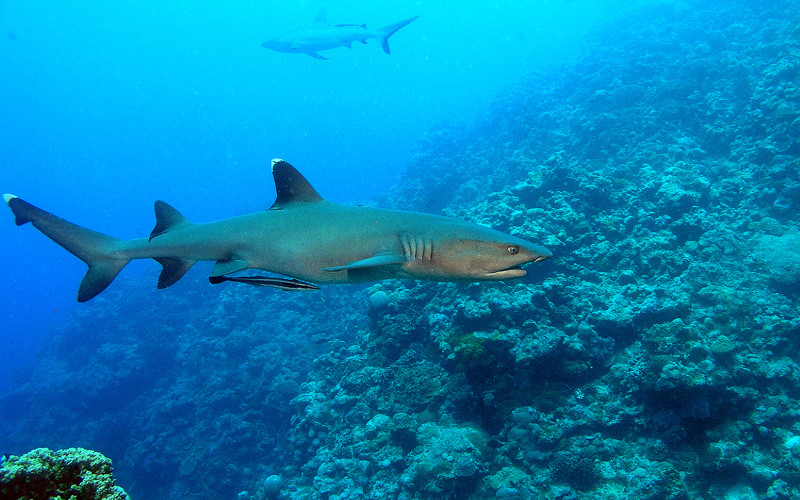Social Structure of Sharks
There isn’t much or reliable information about the social structures of sharks, given the complexity of studying their individual interactions and behavior. However, in recent years the relationships between fish once considered simple and socially primitive have been better understood.
Thus, there is evidence that some shark species manifest a diverse social structure. The traditional image of a solitary shark tends to be half true because not everyone prefers to swim, hunt and feed without any company, on the contrary: they can be territorial and establish hierarchical positions, more often around the feeding areas.
Regarding the above, many have the need to cooperate and share several activities so that from time to time they show some sociability and form large groups, made up of about 100 or more members. This kind of association is the case of hammerhead sharks (Sphyrnidae), accustomed to gather in vast numbers around areas with abundant food.
There is evidence that some shark species manifest a diverse social structure.
The information available on social structure is equivalent to knowing the habits of segregation of some species, not about all of them since it is impossible to generalize but it is possible to formulate hypotheses based on such observations. The following are examples of social behaviors discovered, which are far from the supposed brief and simple relationships between sharks:
Most white sharks (Carcharodon carcharias) are solitary, but couples sometimes swim together for a long time. Apparently, the link does not break immediately after mating. Females are at a higher hierarchical level than males, but body size is a major factor in determining who dominates whom.
They are perhaps the shark species that shows the most complex social structure. Each year couples or small groups of individuals meet whose members are almost always the same age, the same size, and the same gender.
When conflicts arise within a group, members resolve the situation through rituals and demonstrations of power; There are rarely strong physical attacks.
Blacknose sharks (Carcharhinus acronotus) can establish and maintain relationships. They form groups but are very selective, so they tend to build links only with individuals of the same size. Also, they have the habit of harassing or scare smaller Blacknose sharks. The rules within a group are usually clear. The big sharks eat before the smaller ones, which wait until they finish up under penalty of being involved in the frenzy of the moment and also become the food of its companions.
The Scalloped Hammerhead (Sphyrna lewini) usually do not gather with other animals of the same species.
The Gray reef sharks (Carcharhinus amblyrhynchos) only meet with female gray reef sharks when they have to mate.
The sand tiger sharks (Carcharias taurus) congregate in groups of 5 or 6 individuals off the Atlantic coast of the United States and stay stacked on top of each other until it is their turn to mate.
Socially active sharks have higher survival rates than solitary sharks, but it is not known with certainty why some species form groups, the factors that affect the constituents, the mechanisms of recognition among their members, the types of interactions within them nor the effects they have on their organization, structure and complexity.
Of course, these issues provide a perspective on future research, and a broader picture is expected to highlight the importance of sharks in shaping ecosystems and oceanic food chains.
Sharks don’t have to rely on each other to survive.
SOCIAL STRUCTURE OF SHARKS
Survival of the fittest is the best way to describe the social relationship of sharks.
Sharks don’t live in groups but tend to live on their own. Even the offspring have to take care of themselves from the very minute that they are born. Since they don’t spend much time together, they do not have a social hierarchy.
SHARKS ARE LONERS
Sharks don’t have to rely on each other to survive. However, some species of sharks cooperate when hunting. They can take down larger prey this way. They will hunt alone though as long as there are adequate food supplies available.
Many experts believe that this individuality has helped sharks to survive for millions of years.
Sources:
https://seaworld.org/en/animal-info/animal-infobooks/sharks-and-rays/behavior
Jeffrey C. Carrier, John A. Musick, Michael R. Heithaus. Biology of Sharks and Their Relatives, Second Edition. 2012
http://voices.nationalgeographic.com/2013/03/11/shark-have-social-networks-learn-from-friends/
http://animaldiversity.org/search/?q=shark&feature=INFORMATION
BioExpedition Publishing © 2017.

